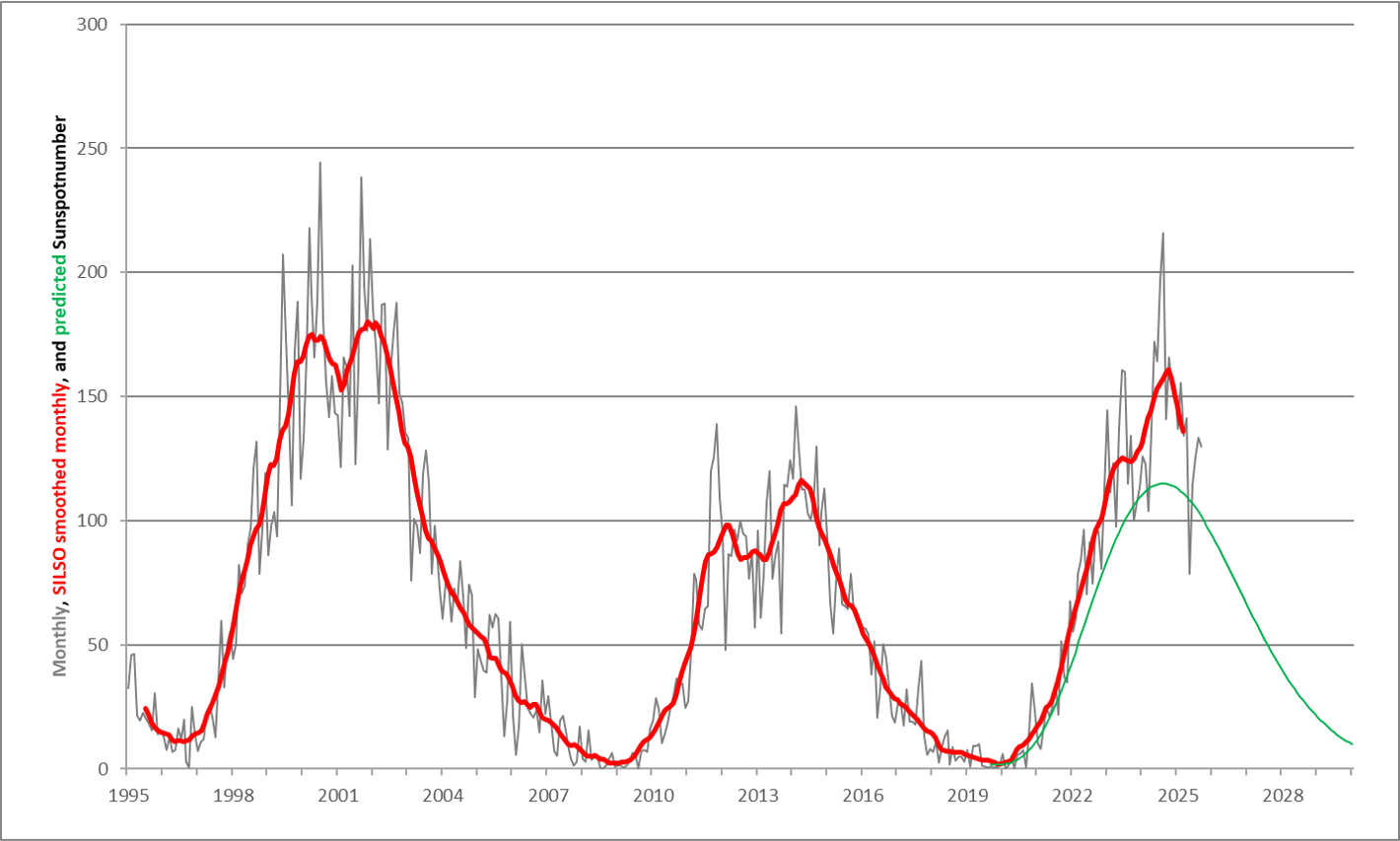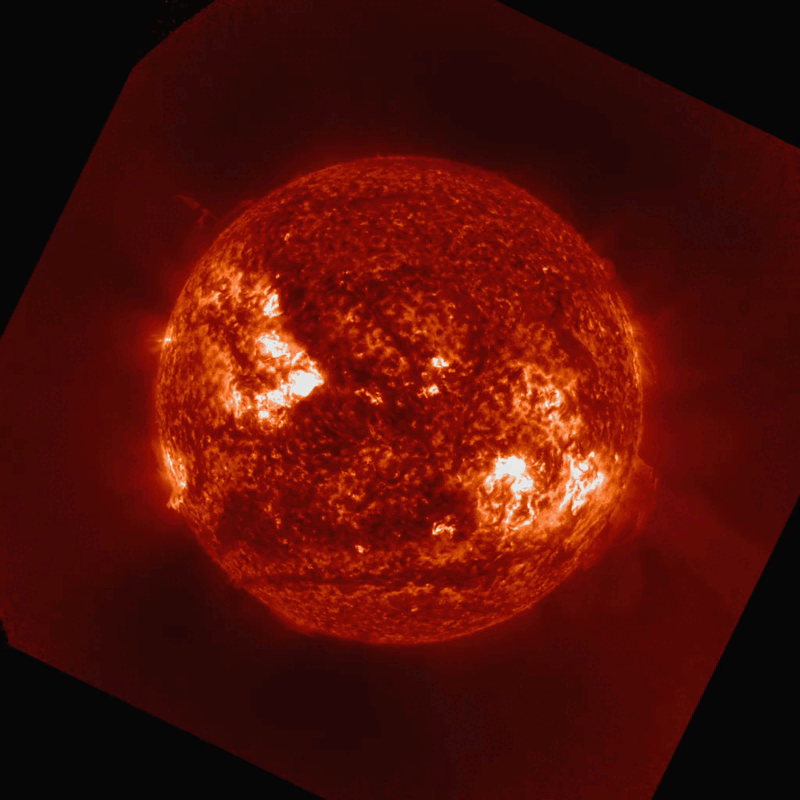The STCE's SC25 Tracking page has been updated to reflect the latest evolution of some critical space weather parameters for the ongoing solar cycle 25 (SC25). It covers various aspects of space weather, from sunspot numbers over geomagnetic indices all the way to cosmic rays. The multiple graphs allow for a comparison with previous solar cycles at similar stages in their evolution.
The graph below shows the monthly and SILSO smoothed monthly sunspot number (SIDC/SILSO) from around the start of SC23 up to the current SC25. The prediction for the ongoing solar cycle 25, which started in December 2019, is displayed in green. Following high solar activity in 2023 and 2024, the smoothed monthly sunspot number reached a maximum of 160.9 in October 2024. As a result, SC25 maximum is well above the initial prediction by the SC25 Panel (115), but also well below the moderately strong SC23 (180.3). Since its maximum late 2024, the overall solar activity has been gradually declining. Over the last 4 months, i.e. from from June till September 2025, only 2 X-class solar flares and 1 severe geomagnetic storm have been recorded. Nonetheless, it is virtually certain that over the next 2-3 years there will still be some episodes with very enhanced solar and geomagnetic activity.

Following the high activity last year, many other parameters such as the 10.7cm radio flux and the number of proton events are now showing a declining trend. In contrast, some other parameters are exhibiting an overall increase. An example is the ramp-up of the greater than 2 MeV electron fluence following the increased number of coronal holes and their associated high-speed wind streams. Another example is the number of solar filaments and prominences, which remains at a high level. The year 2025 actually has seen some spectacular prominence eruptions so far. Solar prominences are clouds of charged particles ("plasma") above the solar surface squeezed between magnetic regions of opposite magnetic polarity. Being cooler and denser than the plasma underneath and their surroundings, they appear as bright blobs when seen near the solar limb and as dark lines when seen on the solar disk (then they are called "filaments"). The larger (longer) these features, the more likely they will erupt. Special filters are required to observe them, such as in the Hydrogen-alpha (H-alpha) line in the red part of the solar spectrum, or in some extreme ultraviolet (EUV) passbands. The imagery underneath shows a recent prominence eruption from 30 September, taken by the GOES/SUVI instrument. The associated coronal mass ejection was not directed to Earth.






